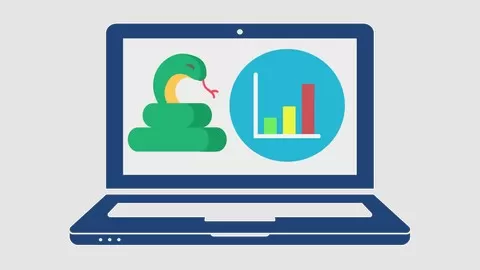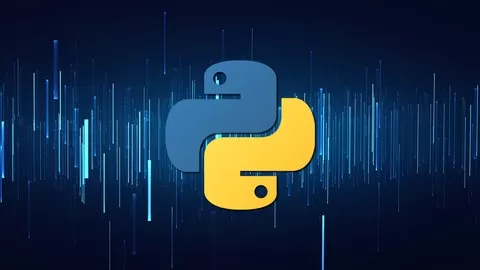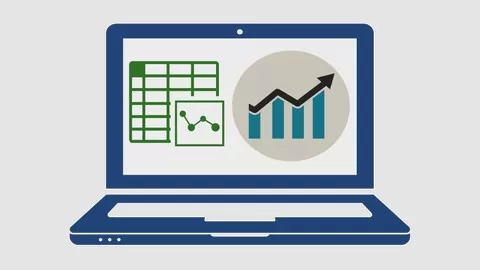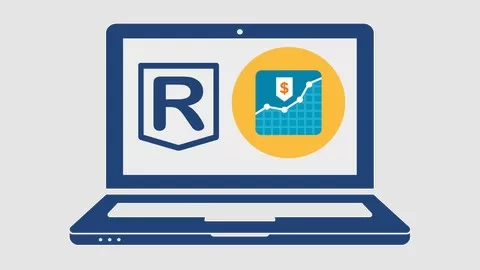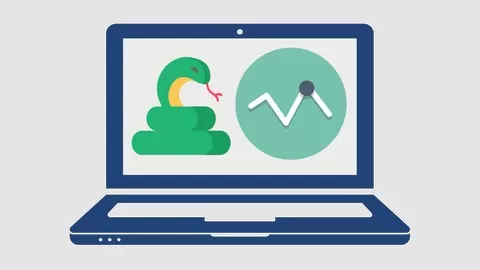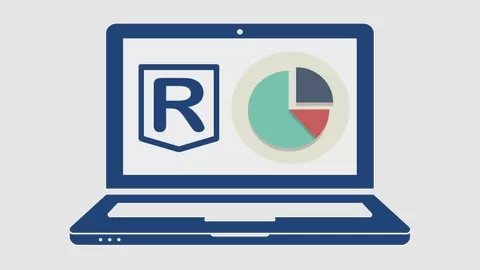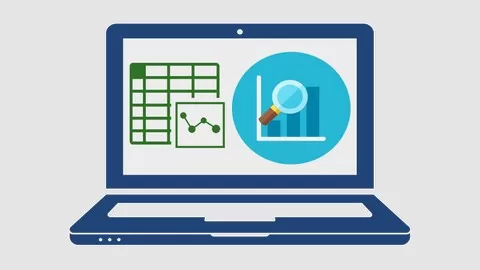Full Course Content Last Update 09/2019
Learn multiple regression analysis through a practical course with Python programming language using stocks, rates, prices and macroeconomic historical data. It explores main concepts from basic to expert level which can help you achieve better grades, develop your academic career, apply your knowledge at work or do your business forecasting research. All of this while exploring the wisdom of best academics and practitioners in the field.
Become a Multiple Regression Analysis Expert in this Practical Course with Python
•Define stocks dependent or explained variable and calculate its mean, standard deviation, skewness and kurtosis descriptive statistics.
•Outline rates, prices and macroeconomic independent or explanatory variables and calculate their descriptive statistics.
•Analyze multiple regression statistics output through coefficient of determination or R square and adjusted R square metrics.
•Examine multiple regression analysis of variance through regression, residuals and total degrees of freedom, sum of squares, mean square error, regression F statistic and regression p-value.
•Review multiple regression coefficients through their values, standard errors, t statistics and regression coefficients p-values.
•Evaluate regression correct specification through individual coefficients statistical significance and correct it through backward elimination stepwise regression.
•Assess regression no linear dependency through multicollinearity test and correct it through correct specification re-evaluation.
•Appraise regression correct functional form through Ramsey-RESET test and correct it through non-linear quadratic, logarithmic or reciprocal variables transformations.
•Evaluate residuals no autocorrelation through Breusch-Godfrey test and correct it by adding lagged dependent variable data as independent variables to original regression.
•Assess residuals homoscedasticity through White, Breusch-Pagan tests and correct it through heteroscedasticity consistent standard errors estimation.
•Appraise residuals normality through Jarque-Bera test.
•Evaluate regression forecasting accuracy by comparing it with random walk and arithmetic mean benchmarks through mean absolute error, mean square error and root mean square error metrics.
Become a Multiple Regression Analysis Expert and Put Your Knowledge in Practice
Learning multiple regression analysis is indispensable for business data science applications in areas such as consumer analytics, finance, banking, health care, science, e-commerce and social media. It is also essential for academic careers in data science, applied statistics, economics, econometrics or quantitative finance. And it is necessary for any business forecasting research.
But as learning curve can become steep as complexity grows, this course helps by leading you through step by step using stocks, rates, prices and macroeconomic historical data for multiple regression analysis to achieve greater effectiveness.
Content and Overview
This practical course contains 36 lectures and 4 hours of content. It’s designed for all multiple regression analysis knowledge levels and a basic understanding of Python programming language is useful but not required.
At first, you’ll learn how to read stocks, rates, prices and macroeconomic historical data to perform multiple regression analysis operations by installing related packages and running code on Python PyCharm IDE.
Then, you’ll define stocks dependent or explained variable. Next, you’ll define independent or explanatory variables through their rates, prices and macroeconomic areas. After that, you’ll calculate dependent and independent variables mean, standard deviation, skewness and kurtosis descriptive statistics. Later, you’ll compute independent variables transformations.
Next, you’ll analyze multiple regression statistics analysis through coefficient of determination or R square and adjusted R square metrics. Then, you’ll analyze multiple regression analysis of variance or ANOVA through regression, residuals and total degrees of freedom, sum of squares, mean square error, regression F statistic and regression p-value. Later, you’ll analyze multiple regression coefficient analysis through regression coefficients values, standard errors, t statistics and regression coefficients p-values.
After that, you’ll evaluate multiple regression correct specification through coefficients individual statistical significance and correct it through backward elimination stepwise regression. Then, you’ll evaluate multiple regression independent variables no linear dependence through multicollinearity test and correct it through correct specification re-evaluation. Next, you’ll evaluate multiple regression correct functional form through Ramsey-RESET linearity test and correct it through non-linear quadratic, logarithmic and reciprocal transformations of variables. Later, you’ll evaluate multiple regression residuals no autocorrelation through Breusch-Godfrey test and correct it by including lagged dependent variable data as independent variables in original regression. After that, you’ll evaluate multiple regression residuals homoscedasticity through White, Breusch-Pagan tests and correct it through heteroscedasticity consistent standard errors estimation. Then, you’ll evaluate multiple regression residuals normality through Jarque-Bera test.
Later, you’ll evaluate multiple regression forecasting accuracy by dividing data into training and testing ranges. After that, you’ll use training range for fitting best model by going through steps described in previous sections. Then, you’ll use best fitting model coefficient values to forecast through testing range. Finally, you’ll evaluate testing range forecasted values accuracy by comparing it with random walk and arithmetic mean benchmarks through mean absolute error, mean square error and root mean square error metrics.
Learn to create Machine Learning Algorithms in Python and R from two Data Science experts. Code templates included.
4.6
★★★★★ 4.6/5
876,088 students
